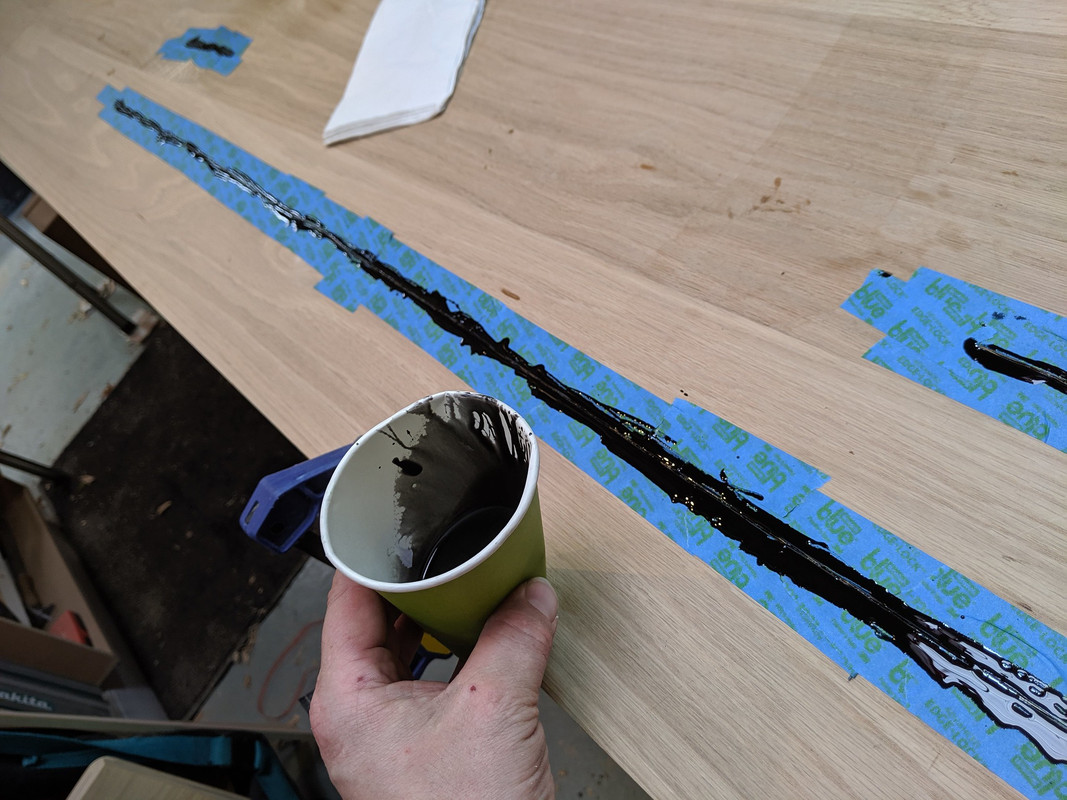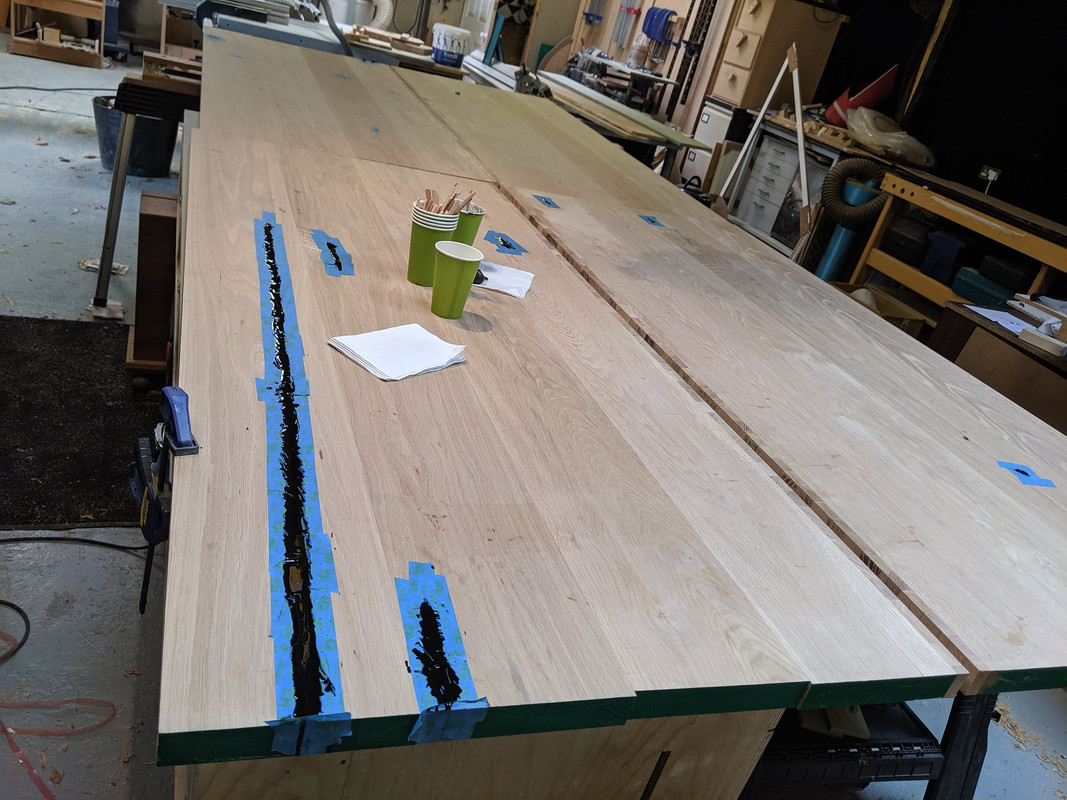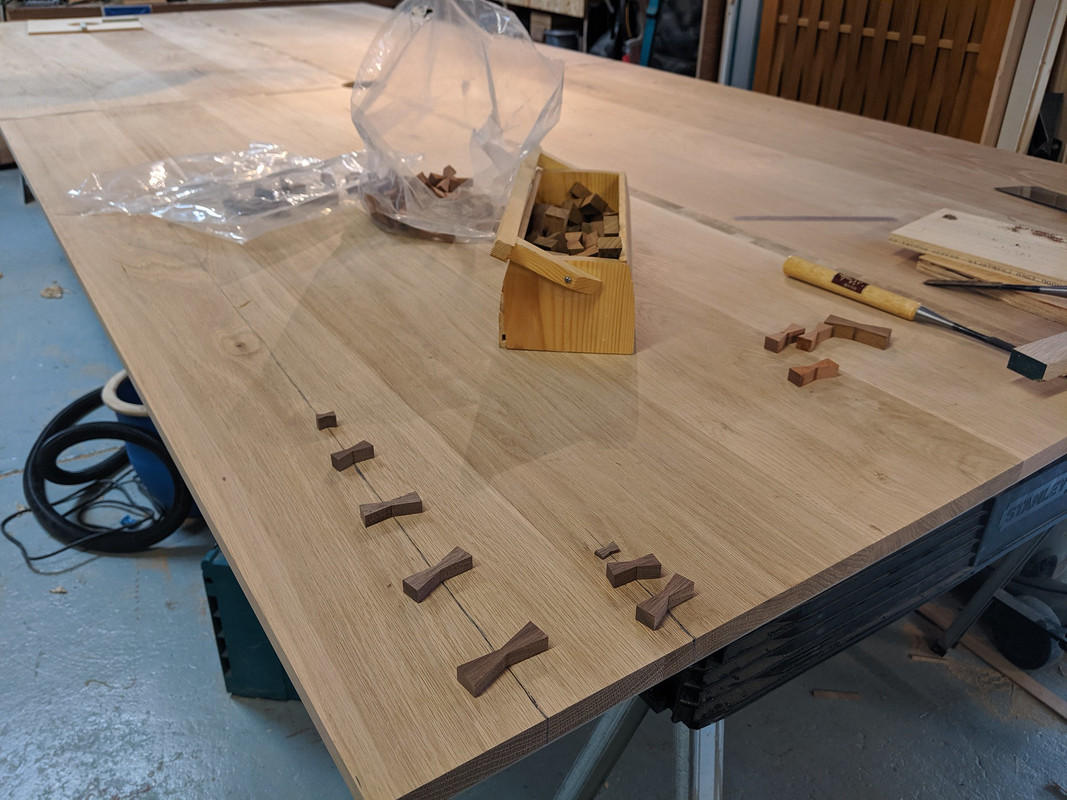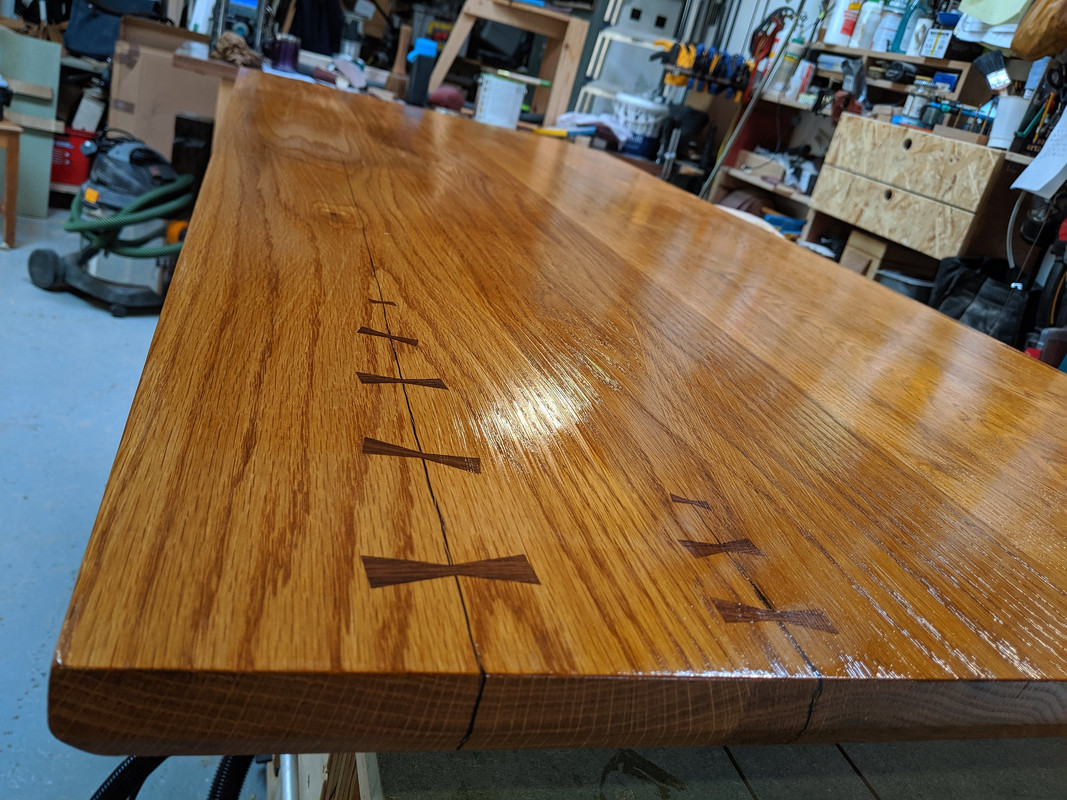Home › Forums › Chat Forum › What clear epoxy to fill gaps in an oak table
- This topic has 16 replies, 12 voices, and was last updated 4 years ago by kayak23.
-
What clear epoxy to fill gaps in an oak table
-
AlbanachFree MemberPosted 4 years ago
We have a kitchen table which was stored for a long time in a non-ideal location which caused issues with gaps opening up at joins and some cracking. Despite it being repaired to close most of the gaps there are still a few places which I’d like to fill as they get bunged up with crumbs and glitter and anything other bits and bobs which my kids are playing with. What clear epoxy would people recommend to do something like this? Would you try and dye the epoxy to match the table colour? Obviously I am looking for a small quantity as there isn’t all that much to do so I would rather not buy a litre tin or similar. Cheers!
maccruiskeenFull MemberPosted 4 years agoWould you try and dye the epoxy to match the table colour?
mix the epoxy with a metal powder. in the manor of kintsukuroi pottery repairs
Most places that sell epoxy will also sell powdered brass, copper or bronze. Over gill the gaps and sand back to reveal the metal
joshvegasFree MemberPosted 4 years agoMake sure you tape the underside PROPERLY or you might find the crack is bigger than anticipated 🥺
Although reading the link from nacruisken if you go metal… Make sure you tape the top properly.
deadlydarcyFree MemberPosted 4 years agoA colour matched flexible mastic might be better – search Bona Gap Master – depending on the shade of the oak in your table, a medium oak might do the job. Have some wipes handy as it’s not water based. Gun it in, use a flexible filling knife to flatten it, wipe off the excess around the edges of the gap. Job jobbed.
If you want an easier (water based) filler to work with, Osmo do various shades as well, although I find with those, they dry back much lighter in colour than their shade on the tub. Let it dry then rub in a bit of oil to bring out the colour.
damascusFree MemberPosted 4 years agoTry and get an off cut of oak in a similar colour. Sand that with a fine grit and mix the sawdust with glue and use that paste to fill in the gaps. In theory when it dries you won’t see it. Just use pva glue. I might be wrong but an expoxy glue might cause you issues. Pva moves a bit more.
nickdaviesFull MemberPosted 4 years agoLook on youtube theres absolutely loads of videos on this at the moment. Plenty show what they use. Total boat seems popular but any marine epoxy should do the trick. The black dyes look quite cool as pure filling epoxy. I wouldn’t go clear cos you’ll see all the bad bits, whereas black then sand the whole top should look great.
As above, you need to tape the base and you will need lots more than you think. If you want to do a quick job in situ on really small cracks id use something like devcon 5 minute, mix it and allow it to harden for a couple of minutes then apply it in a couple of layers, it wont look as good but it shouldn’t run through the wood so much.
Ive used the colour matched wood filler before and its probably better for small gaps, i’ve also used the oak flooring sealant from screwfix which works and looks surprisingly good but cant see it holding up to kitchen table abuse.
eddiebabyFree MemberPosted 4 years agoThis bloke works with epoxy and some seriously damaged wood to produce amazing stuff. Met in the pub on a long midday ride last year and he described what he did. I thought bullshit, but he showed me around the workshop….
CountZeroFull MemberPosted 4 years agoFilling flaws with coloured resin, or resin with metal powder is a time-honoured Japanese process, deliberately highlighting flaws and damage by a repair that contrasts rather than blends and obscures, as maccruiskeen says.
Using butterfly keys to prevent the cracks opening further would be the obvious option if the item was a showy thing like a posh dining table, but in this instance filling with an epoxy/metal powder mix sounds perfect for a work top/ table in heavy, regular use, where all sorts of dodgy stuff can get into the crack. (Ooer, missus). 😁

This uses glow in the dark resin, which could be a rather cool option:
 kayak23Full MemberPosted 4 years ago
kayak23Full MemberPosted 4 years agoI used a dedicated epoxy kit with a tint from here when I made a mahoosive Oak conference table. It worked very well but as mentioned above, you really need to make sure you seal underneath too as the resin in a thin, pourable consistency will find any way through!
https://www.mbfg.co.uk/polycraft-cleartop-35-bar-table-resin.html
Epoxy pigments
https://www.mbfg.co.uk/epoxy-pigments.html
https://www.instagram.com/p/B01PVYagNBQ/?igshid=lg2idq13c97r



 TheBrickFree MemberPosted 4 years ago
TheBrickFree MemberPosted 4 years agoI’ve seen some amazing use of Epoxy on roots and stump. I keep thinking I will try it then I look up how much large amounts of the epoxy cost!
AlbanachFree MemberPosted 4 years agoThanks folks it’s on the Covid jobs to do list. If I was to sand the whole table back and treat it with an oil what would people recommend.
CountZeroFull MemberPosted 4 years ago@kayak23 – love that table, nice use of epoxy fill and butterfly keys!
willyboyFree MemberPosted 4 years agoWe use easy composites at work. They have some very good guides on their website.
Just remember PPE and a well ventilated area when using most resins.dyna-tiFull MemberPosted 4 years agoI love your big oak table. Its the size of my entire workshop though 😆 any pics of the base.
kayak23Full MemberPosted 4 years agoThe base was pretty simple and off the shelf due to budget.
Some big and chunky steel A-frame trapezium legs from here.
The topic ‘What clear epoxy to fill gaps in an oak table’ is closed to new replies.
